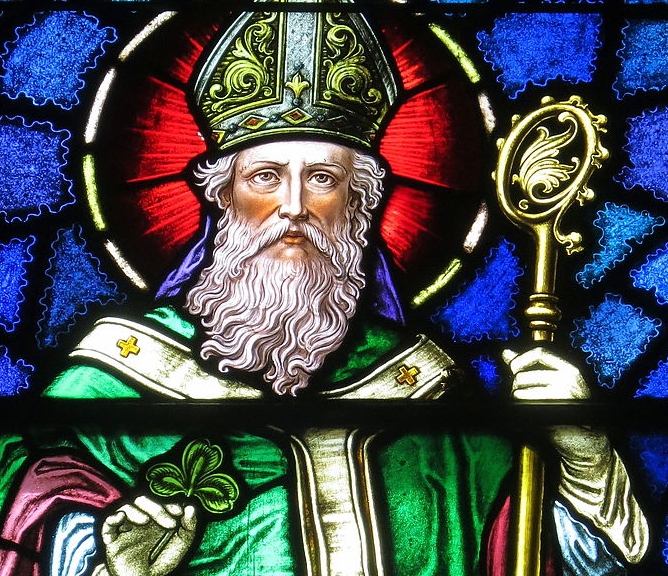By Emily Davis, ’27
Staff Writer
Whether you’re Irish or not, many people celebrate St. Patrick’s Day on March 17. While the holiday is associated with leprechauns, rainbows, gold and pubs, not many of us know the true origination of the day, or why it’s celebrated.
Saint Patrick’s Day is cleverly named after St. Patrick, a patron saint of Ireland from the fifth century. But his original name was Meawyn Succat, according to “History of St. Patrick’s Day” on History.com. The man who would be St. Patrick was kidnapped as a slave from Roman Britain and brought to Ireland when he was 16 years old. He escaped slavery yet returned to Ireland, where he is credited with introducing Christianity. Some say he explained a major belief of Christianity, the Holy Trinity, through the three leaves of a shamrock.
Much of the history of St. Patrick is considered myth or legend. One popular story is that St. Patrick banished snakes from Emerald Isle. However, according to “St. Patrick’s Day Legends and Myths Debunked” on History.com, the water surrounding Ireland would have been far too cold for snakes to be able to swim and survive.
“Water has surrounded Ireland since the end of the last glacial period, preventing snakes from slithering over,” author Jennie Cohen writes. “Before that, it was blanketed in ice and too chilly for the cold-blooded creatures.” Plus, how would one be physically capable of banishing snakes?!
Another popular myth is that St. Patrick and Ireland are associated with the color green. Historically, the color blue was worn by St. Patrick’s knights, and not green. According to Cohen, the holiday became associated with the color green to connect it with Irish independence.
The holiday has been celebrated for centuries, marking the day St. Patrick is thought to have died in 461. The first parade was held in 1601 in the Spanish colony of St. Augustine, Fla., where an Irish vicar lived, according to “History of St. Patrick’s Day.” While originally a religious holiday, today it is more a celebration of Irish culture. Parades are held in more than 100 cities, with Boston’s among the largest.
What about leprechauns, colorful rainbows and pots of gold? According to the “History of St. Patrick’s Day,” leprechauns come from Irish folklore, stories of magical creatures known for their mischief and treasure hunting.They have their own holiday on May 13, but over the years have become part of St. Patrick’s Day as well.
Sources:
Cohen, Jennie. 7 St. Patrick’s Day Legends and Myths Debunked | HISTORY, 17 March 2022, https://www.history.com/news/st-patricks-day-myths-debunked. Accessed 10 March 2024.
St. Patrick’s Day: Origins, Meaning & Background | HISTORY, 27 October 2009, https://www.history.com/topics/st-patricks-day/history-of-st-patricks-day. Accessed 10 March 2024.

